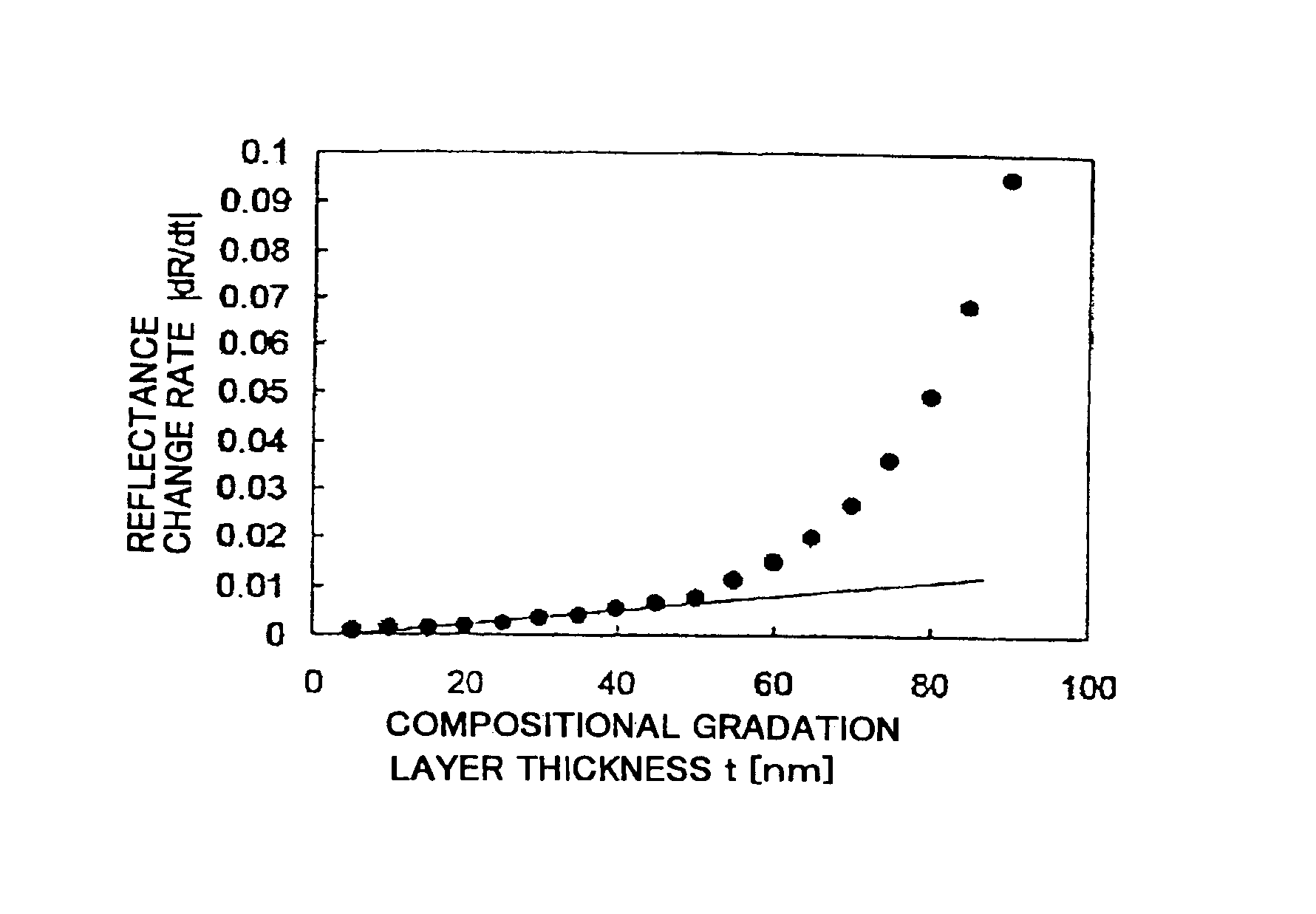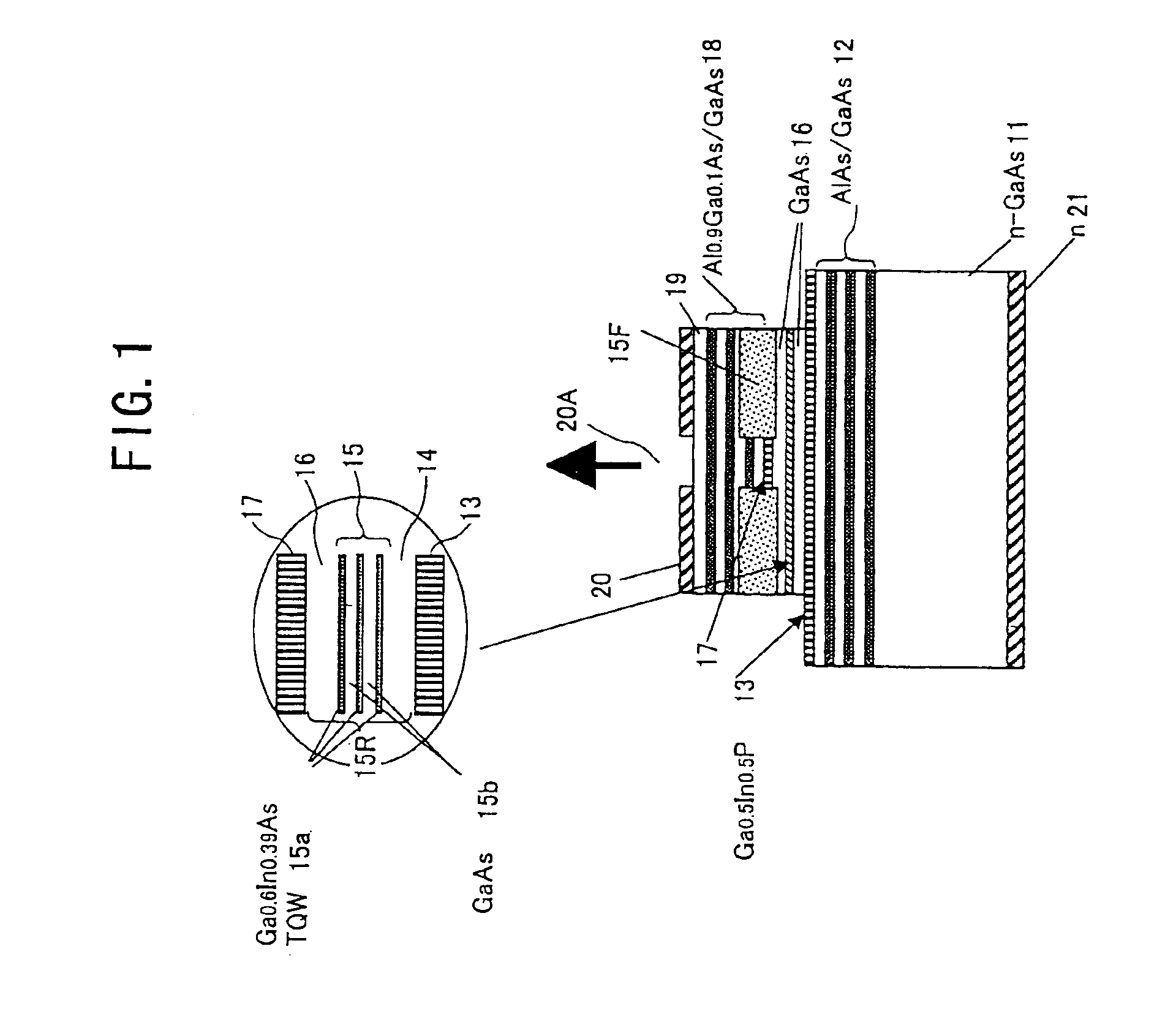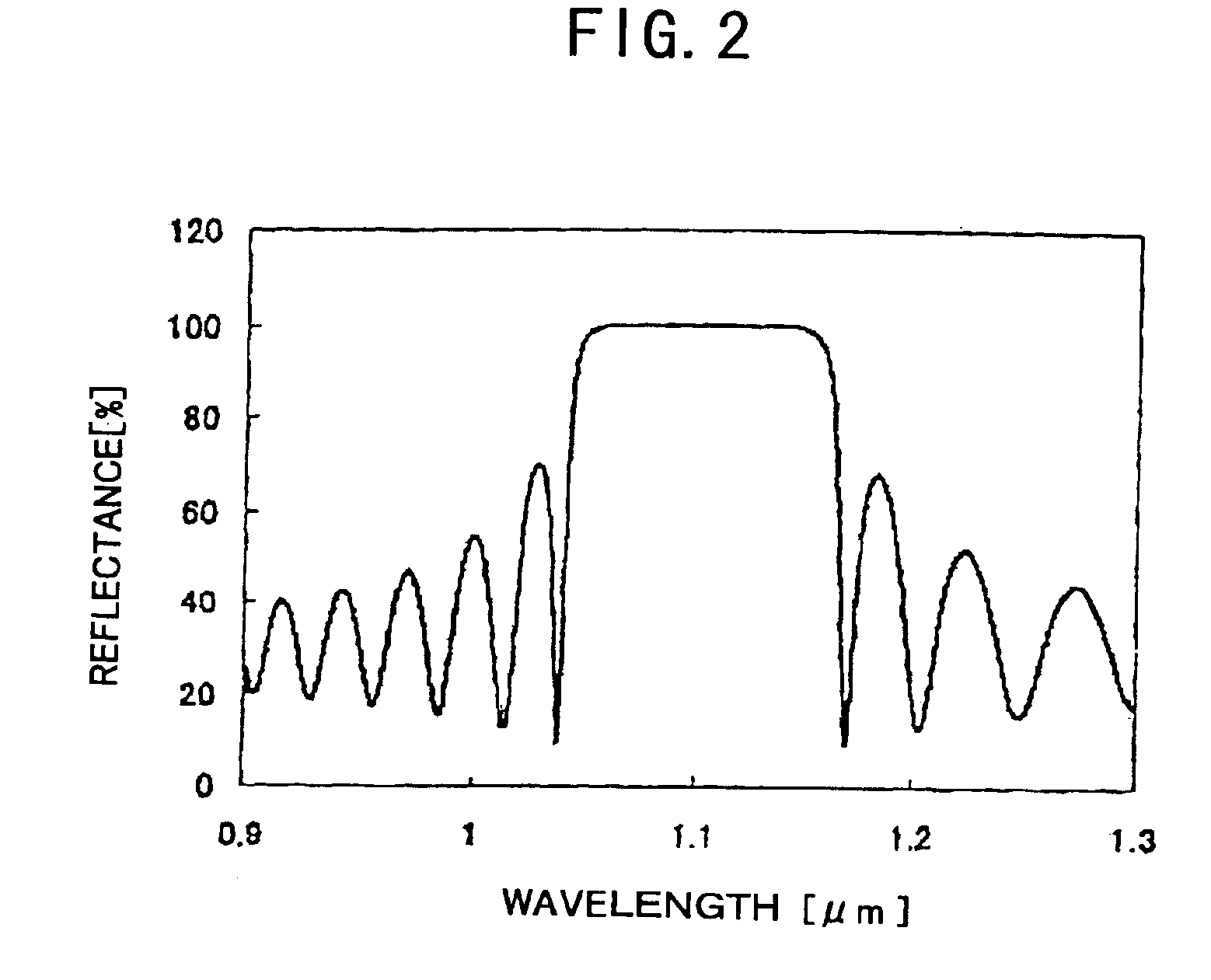Surface-emission laser diode operable in the wavelength band of 1.1-7mum and optical telecommunication system using such a laser diode
- Summary
- Abstract
- Description
- Claims
- Application Information
AI Technical Summary
Benefits of technology
Problems solved by technology
Method used
Image
Examples
tenth embodiment
[Tenth Embodiment]
[0545]FIG. 63 shows the example of a telecommunication system that uses the long-wavelength surface-emission laser diode chip 32 with the laser oscillation wavelength 1.1-1.7 μm band with plural optical fibers. Those parts explained previously in the FIG. 63 are designated with the same reference numerals and explanation is omitted.
[0546]In the construction of FIG. 63, the laser diode 32A in the laser diode chip 32 is driven by a communication control unit 81 via a laser diode driver circuit 82. The optical signal is supplied to the optical fibers 72 and 73 in the form of an optical beam.
[0547]Conventionally, an optical telecommunication system was studied by using the laser oscillation wavelength of 0.85 μm. However, because of the large transmission loss in the optical fiber, it was not practical for long distance telecommunication. Further, in the case of the telecommunication system that uses the plural optical fibers in combination of conventional edge-emissio...
eleventh embodiment
[Eleventh Embodiment]
[0558]FIG. 69 shows an example of the optical fiber 101 used in a telecommunication system that uses a long-wavelength surface-emission laser diode. Those parts explained previously are designated by the same reference numerals and the description thereof will be omitted.
[0559]FIG. 69 is referred to. The optical fiber 101 is injected with the laser beam emitted from the laser diode emission part 32A. The optical fiber 101 consists of cladding 101B enclosing a core 101A, and the core 101A transmits the laser beam thus injected. The diameter D of the core 101A is determined with regard to the length L so as to satisfy the condition 105≦L / D≦109.
[0560]Conventionally, an optical telecommunication system was studied by using the laser oscillation wavelength of the 0.85 μm band. However, the transmission loss of the optical fiber was too large and there was no practical value. Also there was no laser diode that can oscillate stably in the long-wavelength band, in which...
twelfth embodiment
[Twelfth Embodiment]
[0583]FIGS. 74A and 74B show an example of a laser diode chip 120 that is used with the optical telecommunication system in which the long-wavelength surface-emission laser diode of the present invention is used, wherein FIG. 74A shows a plane view while FIG. 74B shows a cross-sectional view taken along a line A-A′. It should be noted that the scale FIG. 74A is not identical with the scale of FIG. 74B. In the drawings, those parts explained previously are designated by the same reference numerals and the description thereof will be omitted.
[0584]FIGS. 74A and 74B are referred to.
[0585]It can be seen that the long-wavelength surface-emission laser diode 32A and the photodetection device 34A are formed to monolithically on a laser diode chip 120.
[0586]The photodetection device 34A has a stacked structure similar to the stacked structure of the long-wavelength surface-emission laser diode 32A and is formed simultaneously with the process of forming the surface-emiss...
PUM
 Login to View More
Login to View More Abstract
Description
Claims
Application Information
 Login to View More
Login to View More - R&D
- Intellectual Property
- Life Sciences
- Materials
- Tech Scout
- Unparalleled Data Quality
- Higher Quality Content
- 60% Fewer Hallucinations
Browse by: Latest US Patents, China's latest patents, Technical Efficacy Thesaurus, Application Domain, Technology Topic, Popular Technical Reports.
© 2025 PatSnap. All rights reserved.Legal|Privacy policy|Modern Slavery Act Transparency Statement|Sitemap|About US| Contact US: help@patsnap.com



